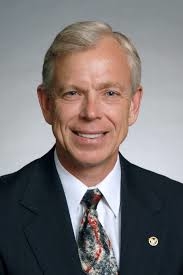Verizon is no longer considering a large-scale acquisition of a major cable MSO as a way to get the fiber infrastructure it needs to support a multipurpose fiber network for 4G and 5G wireless and enterprise services.
While he did not cite any specific cable operators, Lowell McAdam, chairman and CEO of Verizon, told investors during the Goldman Sachs 26th Annual Communacopia Conference that these companies don’t have the fiber facilities it needs.

“About a year ago we went through a process of taking a look at cable companies, but the fiber infrastructure isn’t there,” McAdam said. “You certainly have great companies that have got a good financial model, but for the future that we see to need that kind of bandwidth for customers you have to have deep fiber in the network.”
RELATED: Verizon’s Ellis: We’ll look at fiber acquisition on a geographic basis
McAdam added that it does not make sense for Verizon to go through a process of replacing HFC, which is the prevalent wired medium for cable operators, with fiber.
“Instead of pulling out the coax and put in the fiber, I’d rather just put in the fiber,” McAdam said. “We’ve moved on from those discussions.”
That’s not to say that Verizon will rule out purchasing fiber assets from other service providers.
Case in point, the service provider is in the process of purchasing a large portion of WOW’s fiber network in Chicago.
“I think the fiber companies values are a little frothy compared to what you can build it for yourself,” McAdam said. “We do see pockets like Wide Open West in Chicago that made sense to do so we’ll keep our options open."
Cities embracing fiber, network expansions
Whether Verizon decides to build out its own fiber or purchase another provider’s network or lease, a key determining factor for the telco lies in its ability to work cooperatively with cities.
In order to build out its fiber network to support its 4G and 5G wireless and wireline business aspirations, Verizon is establishing agreements with various U.S. cities to get access to rights of way and other critical infrastructure.
“Cities are embracing us to come in and provide this broadband service for the citizens,” McAdam said. “More and more people are moving into cities and they need to have smart city applications, including smart transportation, smart lighting, and smart parking services so they’re embracing us coming into their communities.”
Specifically, the service provider has publicly named Boston and Sacramento as two cities where it is installing fiber and wireless infrastructure to support an array of wireless and wireline services for smart city, consumer and business applications.
The service provider struck a deal with Boston to bring Fios to Boston via a $300 million, six-year investment plan that will replace the city's aging copper network infrastructure with fiber.
Additionally, Verizon will use the partnership with Boston and the resulting fiber build to attach small cells on city street lights and utility poles to improve its 4G LTE wireless service to support smart city applications.
“Boston led the way and Mayor Marty Walsh has been a good partner there with permitting and access to conduits,” McAdam said. “That’s why we did the deal with did with Corning for 12.5 million of fiber for the next three years.”
While Verizon will consider every market, McAdam said it will walk away from cities that want too many concessions.
“There’s no market that’s not on the table,” McAdam. “We have had a couple of cities that went the way they went in the past by saying in order come in you’re going to have to pay this and this, while other cities see this as a tremendous value.”
Multi-use fiber architecture
Unlike building out fiber for early Fios or enterprise services, Verizon’s new fiber architecture is focused on a multi-use architecture.
In order to meet its fiber goals within its existing capital budget, Verizon is redirecting the investments it once made to build out 3G wireless and Fios to what is a new network plan.
“We’ve been investing for years in 3G technology and Fios build out and we’re now repurposing those dollars to 5G technology and fiber build out, but it’s a different architecture than what we’d done before,” McAdam said. “Everything we did in the past was purpose-built to support an enterprise or a cell site.”
McAdam said that the other way to look at the new fiber build is that it’s an agnostic pipe that can support any kind of service with new controls via SDN.
“The new architectures you see with software defined networks and the intelligence at the edge, the fiber does not care and neither do we care what service goes over it,” McAdam said. “You put it out there and it is common service more in the way we used to engineer inter-office fiber services.”
